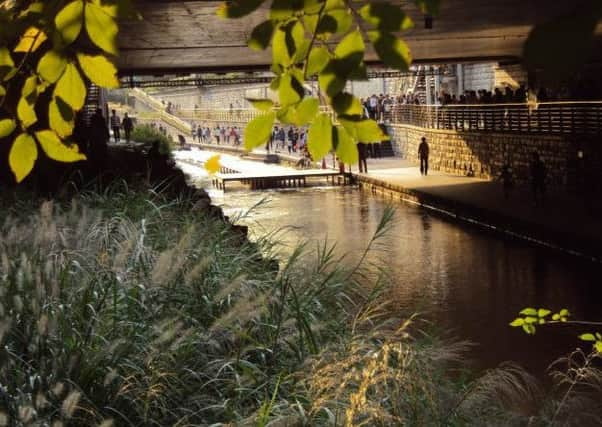The case for restoring the lost rivers of Scotland – Jonny Hughes


In later years, during the Japanese colonial period, the name was changed to Cheonggyecheon which means ‘clean water stream’. By the late 1960s, new technologies for abstracting and treating water meant that the stream was no longer considered an asset to the city and an elevated motorway was built over the, by now dry, riverbed.
From the 1970s to the 1990s, the motorway brought tens of thousands of commuters into central Seoul daily. Air and noise pollution increased hugely and in the summer months, the temperature in the districts around the roads could be several degrees higher than other areas thanks to the ‘heat-island effect’ generated by acres of hot concrete. Businesses and people along the elevated motorway suffered and what was once considered a solution to a booming population was beginning to be viewed a serious liability.
Advertisement
Hide AdAdvertisement
Hide AdThe subsequent restoration of the Cheonggyecheon back to health is one of the most inspiring urban restoration projects in history. By 2005, the elevated motorway had been removed and the ‘clean water stream’ was flowing once again. It took just 29 months.
I visited the Cheonggyecheon in 2012 while on holiday. I knew about the project and probably had overly high expectations of the results of the restoration. On walking the stream for eight kilometres, those expectations were actually surpassed. I found myself moved not just by the scale of the achievement, but also by a sense of hope that this project could be the forerunner of many more in the 21st century.
The cost of the transformation was a mere $281 million, quite a bargain for the benefits gained. Habitats and species long lost under tarmac and concrete have reappeared, making it an urban wildlife haven. The number of cars entering downtown dropped by 2.3 per cent as people switched to rail, bus and bike. The choking pollution has abated and there was an almost immediate 2-5C reduction in summer temperatures. Businesses are booming once again along the stream sides and to cap it all, it has actually improved traffic congestion in the neighbouring streets.
Many of Scotland’s urban watercourses have been lost in the same way Seoul’s clean water stream was. This has often exacerbated flooding, eroded our sense of place and connectedness to the natural world and destroyed histories and geographies in the process.
We might not be removing the M74 extension anytime soon but Scotland certainly has its own versions of the Cheonggyecheon stream crying out to be rescued from being buried alive under concrete.
The first step should be an inventory to map and assess the feasibility of river restoration in Edinburgh, Glasgow, Dundee, Aberdeen and beyond. The second step should be to re-expose several miles of burns to improve the quality of the environment and sense of place in our towns and cities.
The social and economic regeneration benefits of doing this are proven, what’s needed now is some ambition from our politicians and innovation from our engineers, planners, urban designers and ecologists.
Jonny Hughes, a Scottish Wildlife Trust ambassador, is on Twitter @JonnyEcology